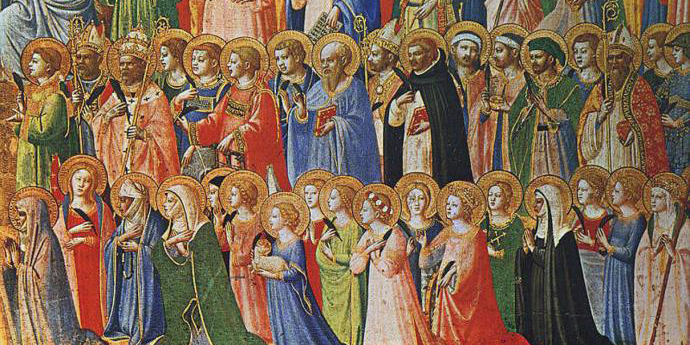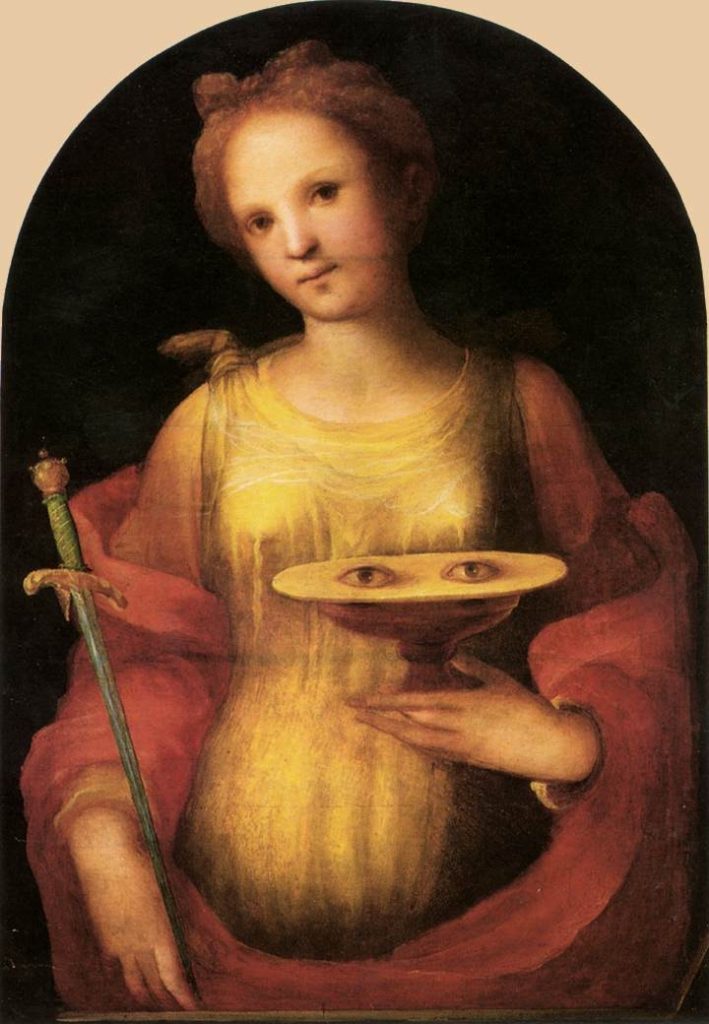

The Church calendar includes “All Saints Day” on November 1 each year to remember truly faithful Christians who have gone before us and to contemplate and perhaps even emulate their heroic lives. One of the benefits of my time serving on the Roman Catholic-United Methodist dialogue team has been a new appreciation for the saints and martyrs and their many feast days.

At the very first meeting I attended in 2016 at the St. John’s Abbey (a Community of Benedictine Monks) in Collegeville, Minnesota, I saw the actual remains of Saint Peregrine, who refused to worship the Roman emperor and was martyred in the year 192. His body is covered with jewels and a white cloth as it lay in a glass coffin.
Recently I learned about Saint Lucy when I observed a picture of a young girl holding a tray with two eye balls. The priest on the dialogue team explained that this saint was also a martyr who lived in Syracuse, Sicily. She died during the Diocletianic Persecution in 304 AD because she refused to marry, due to a vow of purity she made to God.
Lucy came from a family with much wealth, but as part of her Christian virtue, she distributed much of her gold and jewels to help the poor. The man to whom she was pledged in marriage was none too pleased about this “squandering” of her wealth that he expected to receive. So he turned her into the governor for punishment. The governor in turn demanded that Lucy burn sacrifices to the emperor. This she refused to do and was condemned to death.

According to legend, the soldiers who were instructed to execute her could not move her, even with a team of oxen. Then they tried to burn her, but the flames would not consume her body. Finally they gouged out her eyes and thrust a sword down her throat, and she died.
St. Lucy is often represented in Scandinavian Advent festivals as a young girl dressed in white and wearing a crown of evergreen with burning candles. She is always carrying a basket of bread. This is reminiscent of Lucy’s distribution of food to the poor and to those hiding in the catacombs. The candles on her head are there to light her way in the darkness and leave her hands free to hold as much bread as possible.
This charming account of St. Lucy is still worth pondering today as we approach our observance of “All Saints Day.” Lucy made a promise to God and kept it! Like Peregrine, she refused to worship the emperor. For that, she was willing to sacrifice her life through death by torture.
Lucy also had a heart for the poor and those who were being persecuted. She gave generously to them, which also led to her persecution and death.
Still today, the light of Lucy’s wreath of candles shines for us saints who yet walk the earth seeking to serve others and to worship only God. Each day we proclaim our faith and devotion to God by our words and our actions. Each day we have the opportunity to give generously and sacrificially to those in need.
Living the Christian life has never been easy. But as we remember the lives of devoted saints that have gone before us, we are grateful and encouraged that their holy example cheers us on for higher levels of service and sacrifice.
